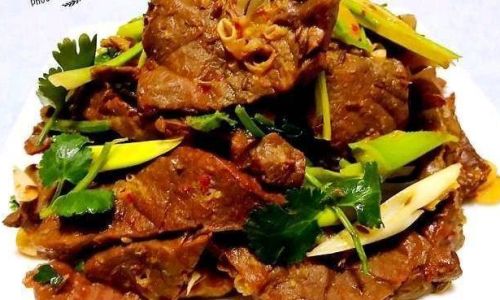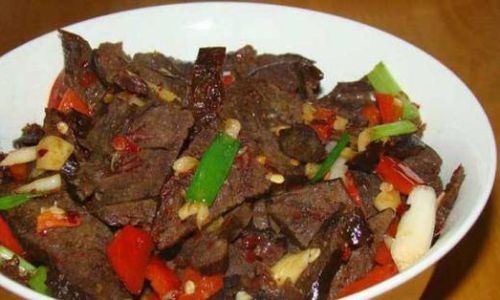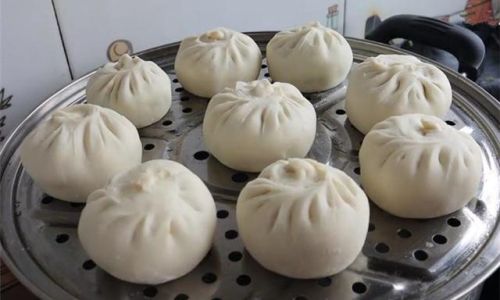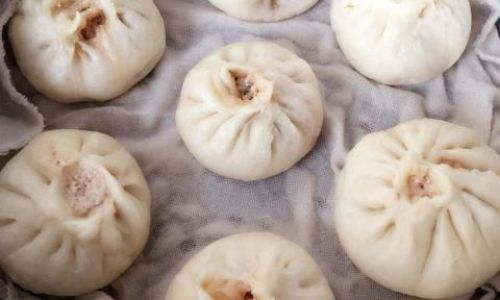Introduction
Stir-fried pig lungs, a dish deeply rooted in Chinese culinary traditions, offer a bold and savory experience that tantalizes the taste buds. Often overlooked in Western cuisines, this organ meat is revered in many Asian cultures for its unique texture and ability to absorb flavors. When prepared correctly, stir-fried pig lungs become a tender, aromatic delight that pairs perfectly with rice or noodles. This article delves into the intricacies of crafting this dish, from selecting the freshest ingredients to mastering the stir-fry technique. Whether you’re a seasoned home cook or a curious food enthusiast, this guide will equip you with the knowledge to recreate this classic recipe authentically.
Understanding the Ingredients
The foundation of any great dish lies in its ingredients. For stir-fried pig lungs, quality is non-negotiable. Here’s a breakdown of the key components:
- Pig Lungs: Freshness is paramount. Look for lungs with a pinkish hue, firm texture, and no off-putting odor. Avoid those with discoloration or a slimy surface.
- Aromatics: Garlic, ginger, and scallions form the flavor base. Fresh garlic cloves and young ginger root are ideal.
- Vegetables: Bell peppers, onions, and chili peppers add crunch and color. Opt for crisp, vibrant produce.
- Sauces: Soy sauce, oyster sauce, and a touch of vinegar balance the dish. Dark soy sauce lends a rich color, while light soy sauce provides saltiness.
- Seasonings: Sugar, white pepper, and Shaoxing wine (Chinese rice wine) elevate the umami notes.
- Starch: Cornstarch helps tenderize the meat and thickens the sauce.
- Oil: Use a neutral oil with a high smoke point, such as peanut or vegetable oil, for stir-frying.
Preparation: Cleaning and Marinating
Cleaning pig lungs thoroughly is crucial to eliminate impurities and odor. Follow these steps:

- Rinse the Lungs: Place the lungs in a large bowl and rinse under cold water, gently massaging to remove blood clots.
- Soak in Vinegar and Flour: Create a mixture of 2 tablespoons of white vinegar and 1/4 cup of all-purpose flour. Rub this into the lungs, focusing on crevices. Let sit for 15 minutes, then rinse again.
- Blanching: Bring a pot of water to a boil. Add the lungs and a slice of ginger. Boil for 5 minutes, then drain and rinse under cold water. This step further removes any residual腥味 (xīng wèi, or “fishy” smell).
Marination
Marinating infuses flavor and tenderizes the meat:
- Slice the Lungs: Cut the lungs into thin, bite-sized strips against the grain to ensure tenderness.
- Marinade Mixture: In a bowl, combine 1 tablespoon soy sauce, 1 teaspoon Shaoxing wine, 1/2 teaspoon sugar, 1/4 teaspoon white pepper, and 1 teaspoon cornstarch. Add the lung slices and toss to coat. Let marinate for 20–30 minutes.
The Stir-Fry Process
Stir-frying demands precision and speed. Here’s how to achieve wok hei (the breath of the wok), that coveted smoky flavor:
- Heat the Wok: Place your wok over high heat until it begins to smoke. Add 2 tablespoons of oil and swirl to coat.
- Aromatics First: Toss in 1 tablespoon minced garlic and 1 tablespoon thinly sliced ginger. Stir-fry for 10 seconds until fragrant.
- Add the Lungs: Drain the marinade (reserve it) and add the lung slices to the wok. Spread them out in a single layer and let sear for 1 minute without stirring. This caramelizes the edges.
- Stir-Fry Vigorously: Toss the lungs continuously for 3–4 minutes until cooked through. They should turn opaque and slightly golden.
- Vegetables and Sauce: Push the lungs to one side. Add 1/2 cup sliced onions, 1/2 cup bell peppers, and 1–2 chopped chili peppers. Stir-fry for 2 minutes. Pour in the reserved marinade, 1 tablespoon oyster sauce, and 1/2 teaspoon dark soy sauce. Mix well.
- Final Touches: Drizzle 1 teaspoon sesame oil and sprinkle 2 tablespoons chopped scallions. Toss to combine.
Tips for Perfect Stir-Fried Pig Lungs
- High Heat is Key: Maintain a searing heat to lock in juices and prevent sogginess.
- Don’t Overcrowd the Wok: Cook in batches if necessary to avoid steaming the meat.
- Taste and Adjust: Season with salt or a splash of vinegar if needed before serving.
- Use Fresh Ingredients: Stale spices or wilted vegetables will dull the dish’s vibrancy.
Serving Suggestions
Stir-fried pig lungs shine when paired with:
- Steamed Jasmine Rice: The fluffy grains balance the dish’s richness.
- Garlic Noodles: Toss cooked noodles with garlic-infused oil for a complementary base.
- Pickled Vegetables: A side of pickled daikon or cucumbers adds a refreshing crunch.
For beverages, pair with jasmine tea to cleanse the palate or a light lager to contrast the dish’s boldness.
Health Considerations
While pig lungs are a good source of protein and iron, they are also high in cholesterol. Moderation is advised, especially for those with cardiovascular concerns. To mitigate this, balance the meal with fiber-rich vegetables and serve in smaller portions.

Cultural Significance
In Chinese cuisine, organ meats like pig lungs are celebrated for their nutritional value and ability to transform humble ingredients into culinary treasures. This dish often graces family tables during festivals or gatherings, symbolizing resourcefulness and respect for the whole animal.
Variations and Innovations
Experiment with regional twists:
- Sichuan Style: Add doubanjiang (fermented broad bean paste) and Sichuan peppercorns for a fiery kick.
- Cantonese Flair: Incorporate fermented black beans and a dash of rice wine for a milder, savory profile.
- Vegetarian Adaptation: Substitute the lungs with oyster mushrooms or king trumpet mushrooms, marinated and stir-fried similarly.
Common Mistakes to Avoid
- Undercooking: Lungs must be cooked thoroughly to ensure tenderness and safety.
- Over-Marinating: Excessive marinating can make the meat mushy. Stick to 30 minutes maximum.
- Skipping the Blanching Step: This step is crucial for removing impurities and odor.
- Using Low-Quality Oil: A neutral, high-heat oil prevents a greasy aftertaste.
Conclusion
Stir-fried pig lungs are a testament to the magic of Chinese cooking—turning an often-overlooked ingredient into a dish bursting with flavor and texture. By mastering the cleaning, marinating, and stir-fry techniques outlined here, you’ll unlock a recipe that delights the senses and honors culinary tradition. Whether enjoyed as a weeknight meal or a banquet centerpiece, this dish invites you to savor the artistry of wok cooking. So, fire up your wok, gather your ingredients, and embark on a journey to recreate this timeless classic. Your taste buds will thank you.






0 comments